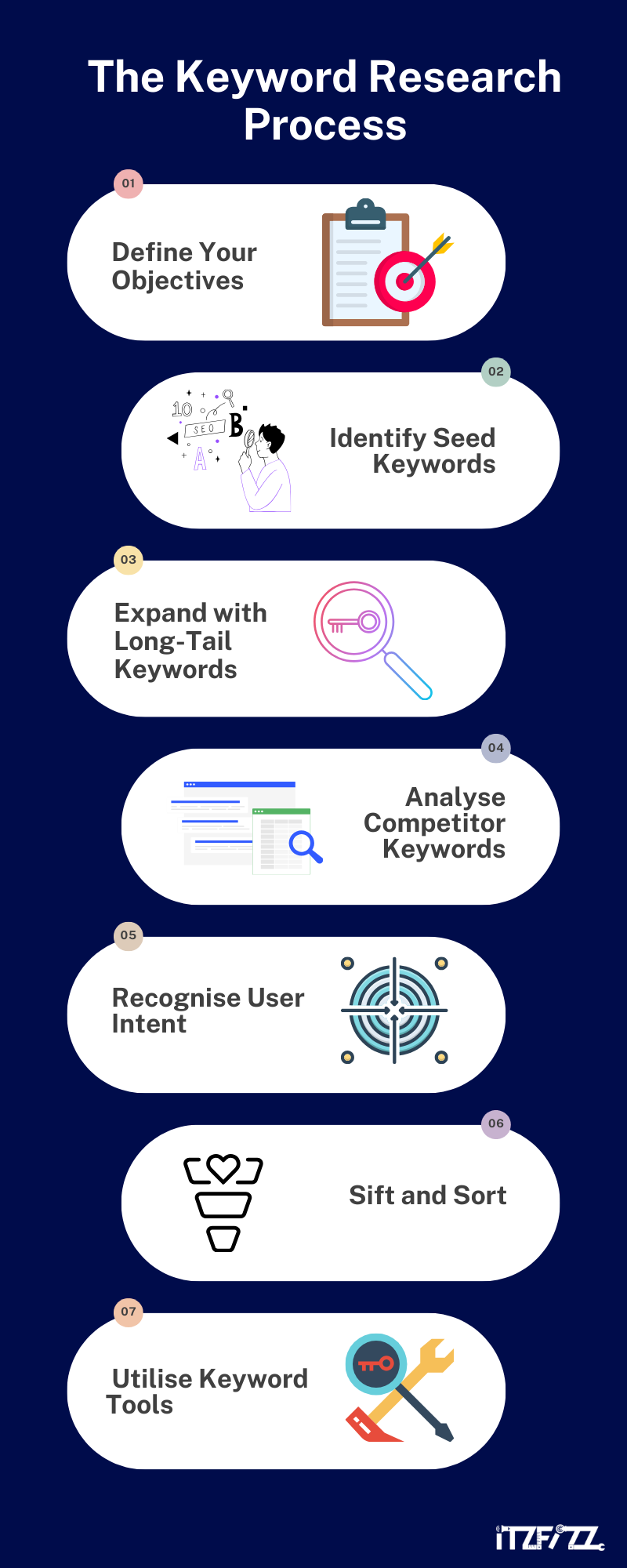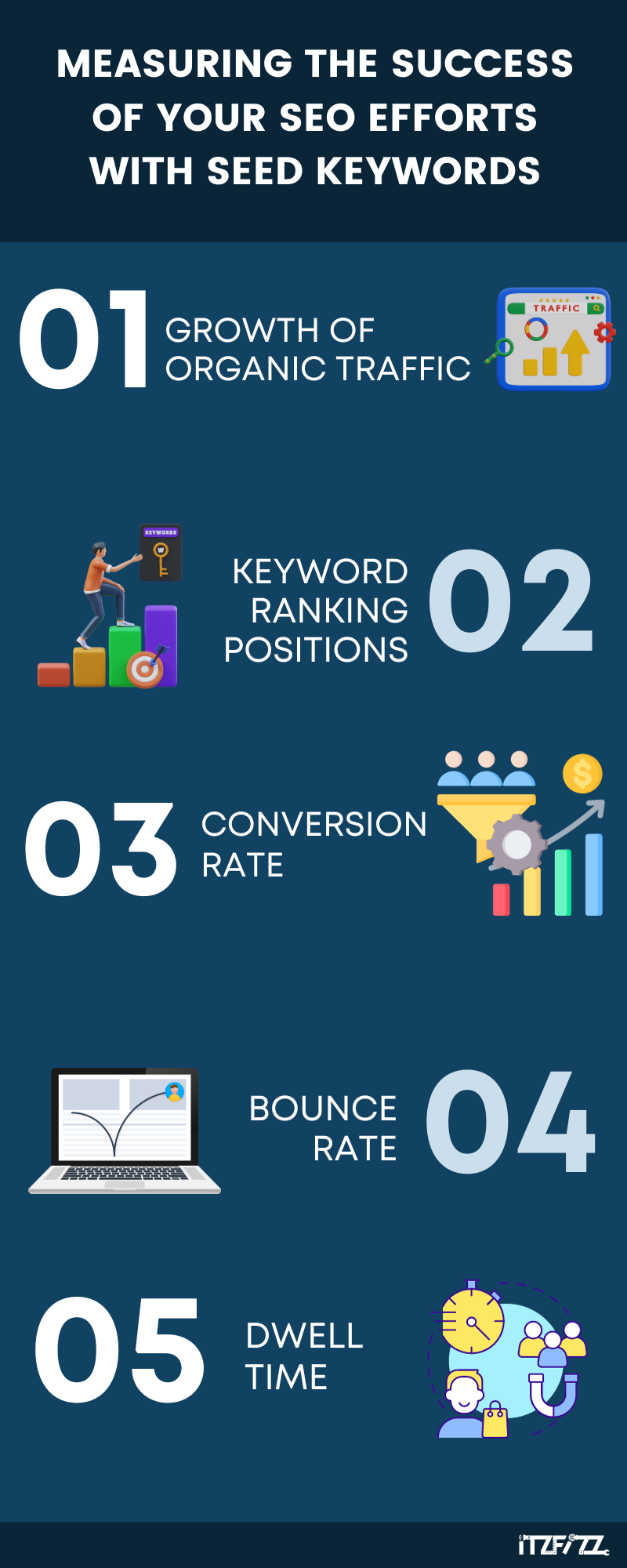Table of Contents
- What are seed keywords?
- Utilising keyword research tool
- The keyword research process
- Search engine optimization (SEO) for seed keywords
- Keyword strategy for seed keywords
- Selecting the right keyword tool
- Tips for creating effective content with seed keywords
- Measuring the success of your SEO efforts with seed keywords
- Generating organic traffic from seed keywords
- Creating a list of potential seed keywords
- Conclusion
- Frequently Asked Questions
Introduction
Within the world of digital marketing, seed keywords are essential to determining the outcome of your search engine optimization efforts. However, precisely what are seed keywords? Fundamentally speaking, seed keywords are the cornerstones of your internet presence. At the core of your entire SEO strategy, these are the words or key phrases that capture the spirit of your company.
Taken together, if your company were a tree, its seed keywords would be its well-established roots in the digital soil, giving it stability and nutrition to flourish. These are the keywords that prospective clients are probably going to use to find goods or services in your sector.
It’s similar to learning the language of search engines to understand the significance of seed keywords. Search engines, like Google, match user requests with relevant content using intricate algorithms. As the first point of contact, seed keywords act as a link between what customers are looking for and what your company has to offer.
Consider seed keywords as the starting point of a journey. When a user enters a search query, the organic search engine relies on these foundational terms to identify and present the most relevant results.
Therefore, the strategic selection and optimization of seed keywords are crucial steps in ensuring that your business is not only discovered but also positioned prominently in search engine rankings.
Utilising keyword research tool
After learning the importance of seed keywords, the obvious question is how to identify these essential phrases that can lead to increased search engine visibility. Luckily, you have more resources at your disposal. SeedKeywords is one such resource for seed keyword research.
SeedKeywords provides a different method for conducting keyword research. Rather than depending exclusively on algorithms, it leverages the combined knowledge of your viewers.
You may design scenarios on the platform and ask people to enter the terms they would use in a certain search query. With the help of crowdsourcing, you may obtain actual user-generated insights on the vocabulary and terminologies that your future clients might use.
Apart from the insights that users have given, Moz’s extensive guide is another goldmine for locating pertinent seed keywords. This article takes you deep into the nuances of choosing the best seed keywords for your business, in addition to guiding you through the fundamentals of keyword research.
Moz stresses how crucial it is to comprehend user intent. Understanding the context and reasons behind such monthly searches is just as important as the terms themselves. You may increase the probability that your pages will show up in searches where your target audience is actively looking for information by matching your content to their intent.
The Keyword Research Process

- Define Your Objectives:
Before setting sail, establish clear goals. Are you aiming to increase website traffic, boost conversions, or enhance brand visibility? Defining your objectives sets the compass for your keyword exploration. - Identify Seed Keywords:
Begin with the foundation and your target keywords. These are the core terms that encapsulate your business. Tools like SeedKeywords and insights from Moz’s guide can aid in this crucial first step. - Expand with Long-Tail Keywords:
Cast a wider net by exploring long-tail keywords, and longer and more specific keyword phrases. These gems often have lower competition and cater to users with highly specific queries. - Analyse Competitor Keywords:
Spy on the competition. Analyse the short-tail keywords your actual competitors are targeting. Tools like Ahrefs can unveil valuable insights into their strategies. - Recognise User Intent: Keywords are more than just text strings; they indicate the intentions of the user. Do consumers want to compare options, browse for information, or make a purchase? Make sure your competitive keywords reflect the purpose of the searches.
- Sift and Sort: As your list of broad keywords expands, sort it according to competitiveness, monthly search volume, and relevancy. Give priority to target keywords that closely correspond with your business objectives.
- Utilise Keyword Tools:
Leverage advanced tools like Serpstat to gain a comprehensive view. Uncover search volumes, competition levels, and trends associated with your chosen keywords.
You may create decisions that are appealing to your audience by being aware of the details of the keyword research approach.
Search engine optimization (SEO) for seed keywords
After identifying our seed keywords with success, it’s time to venture out into the wide world of Search Engine Optimisation (SEO). The compass that points your digital ship in the direction of increased visibility and, eventually, success is SEO.
Basics of SEO
- On-Page Optimization:
– Ensure that your initial seed keywords are strategically placed in essential on-page checklist including elements like title tags, headings, and meta descriptions. This signals to search engines the relevance of your evergreen content. - High-quality content:
– Craft high-quality content, and informative content around your seed keywords. The aim is not just to include keywords but to provide genuine value to your audience. Google rewards content Ideas that satisfy user intent.
- URL Structure:
– Optimise your URL structure to include competitive keywords. A well-constructed URL improves user experience in addition to SEO. - Internal Linking:
– Organise your information into a network of internal links. This improves navigation while also distributing SEO value throughout your website. The Value of Using Specific Seed Keywords
Importance of Targeting Seed Keywords
- Building Relevance:
– By focusing on seed keywords, you’re building a foundation of relevance. Search engines understand what your content is about, increasing the likelihood of being presented to users searching for related topics. - Long-Term Strategy:
– Seed keywords are not just for the present; they pave the way for long-term SEO success. As your content gains authority, so do your seed keywords, solidifying your position in search results.
3. Competitive Edge:
– Effectively optimising for competitor keywords gives you a competitive edge. It’s about more than just ranking, it’s about creating a digital presence that resonates with your audience.
Keyword strategy for seed keywords
- Defining Your Business Focus:
– Identify core products, services, or topics that align with your business goals.
– Specify key offerings to establish a primary focus for your digital presence. - Relevance to Your Audience:
– Recognise the preferences, problems, and interests of your target audience.
– Tailor your seed keywords to resonate with your audience’s needs and search behaviour. - Incorporating Primary Keywords & Secondary Keywords:
– Choose primary keywords directly related to your business focus.
– Include secondary keywords that add depth and cover related aspects of your offerings. - Building a Semantic Network:
– Expand your keyword strategy by incorporating synonyms and related terms.
– Create a semantic network to enhance content relevance and search engine understanding. - Diversifying Your Content:
– Develop a variety of content types (blog posts, videos, infographics) around your seed keywords.
– Ensure diversity to cater to different audience preferences and boost overall visibility. - Analysing Search Intent:
– Understand user intent behind specific queries related to your seed keywords.
– Craft content that aligns with search intent, providing valuable and relevant information. - Monitoring Trends and Changes:
– Stay updated on industry trends, emerging topics, and changes in search algorithms.
– Adjust your seed keyword strategy to reflect evolving trends and maintain relevance.
8. Monitoring Trends and Changes:
– Utilise tools like Google Trends and keyword research platforms for real-time insights.
– Regularly review and update your seed keyword strategy based on changing consumer behaviours and market dynamics.
Selecting the Right Keyword Tool
In the expansive sea of keyword research, the right tools act as the compass, guiding your ship through the vast digital landscape. Selecting the right keyword tool is a crucial step in ensuring that your exploration of seed keywords is thorough, insightful, and ultimately successful.
- SeedKeywords:
– Explore the unique features and functionalities offered by SeedKeywords. How does the platform facilitate user-generated insights, and what sets it apart in the realm of seed keyword discovery? - Moz’s Keyword Research Guide:
– Reflect on the methodologies and tools recommended in Moz’s guide. How can these insights complement your approach to seed keyword research, and what advantages do they offer? - Ahrefs and Serpstat:
– understand how advanced tools like Ahrefs and Serpstat can elevate your keyword strategy. What additional data and perspectives do these tools provide, and how can they be integrated into your research process?
Features to Look for in a Keyword Tool
- User-Friendly Interface
- Comprehensive Data Analysis.
- Competitor Analysis Capabilities
- Integration with Other Tools
Tips for Creating Effective Content with Seed Keywords
- Natural Integration of Keywords
- Creating Engaging Headlines.
- Structured and Readable Content
- Understanding Search Intent
- Interactive and Multimedia Content
- Adaptation to Trends
- Keyword Performance Monitoring
Measuring the Success of Your SEO Efforts with Seed Keywords

As your digital ship sails through the vast ocean of the internet, it’s crucial to have a reliable navigation system in place. Measuring the success of your SEO efforts with seed keywords involves more than just monitoring rankings; it requires a comprehensive analysis of key metrics that reflect the impact on your digital presence.
- Growth of Organic Traffic:
– Monitor the increase in organic traffic to your website. A rising trend suggests that more people are finding your website and that your audience is responding well to your chosen relevant keywords.
- Keyword Ranking Positions:
– Keep an eye on where your pages rank about your goal seed keywords. Ranking progress indicates increased relevance and visibility in search engine results.
- Conversion Rates:
– Examine the percentages of conversions connected to pages that are optimised for seed keywords. Sign-ups, purchases, and other desirable user behaviours are examples of conversions.
- Bounce Rate:
– Determine how often sites that target seed keywords bounce back. Low bounce rates show that users are discovering interesting and relevant information.
- Dwell Time:
– Check your pages’ dwell times. Extended dwell times indicate that users are engaging with your material for longer periods, indicating the relevance of the information.
Among the helpful tools are:
- Google Analytics: Use Google Analytics to learn more about user behaviour, conversion metrics, and organic traffic. To concentrate on the effectiveness of pages optimised for keywords, set up bespoke reports.
- SEO Tools (like Serpstat and Ahrefs):
– Track keyword ranks, keep an eye on backlinks, and evaluate the general health of your website with specialised SEO tools. These resources offer in-depth studies that are essential for continuous optimisation.
In the final sections of our SEO journey, we’ll explore strategies for generating organic traffic from seed keywords and guide you in creating a comprehensive list of potential seed keywords for ongoing success.
Generating organic traffic from seed keywords
The strategic use of seed keywords plays a pivotal role in attracting the right audience and converting visits into meaningful interactions.
- Content Optimization:
– Continuously optimise your content for potential keywords. Regularly update and expand your pages to maintain relevance and signal to organic search engines that your content is current. - Link Building:
– Foster organic link-building by creating valuable and shareable content. Quality backlinks from reputable sources enhance the authority of your pages and contribute to higher search rankings. - Social Media Integration:
– Integrate your seed keywords into your social media strategy. Share content that resonates with your audience, driving traffic from social platforms to your website. - Enhanced User Experience:
– Prioritise user experience on your website. A seamless and intuitive user interface encourages visitors to explore more pages, contributing to increased organic traffic. - Mobile Optimization:
– Ensure that your website is optimised for mobile devices. With the growing prevalence of mobile searches, a mobile-friendly site is essential for attracting and retaining visitors. - User Interaction Metrics:
– Dive into user interaction metrics to understand how visitors engage with your content. Analyse click-through rates scroll depth, and other metrics to identify areas for improvement.
Conversion Funnel Analysis:
– Evaluate the effectiveness of your conversion funnel. Identify potential drop-off points and optimise the user journeys to maximise conversions from organic traffic.
Creating a List of Potential Seed Keywords
This carefully selected catalogue is your gold mine, necessary for ongoing optimisation, content production, and awareness of the ever-changing user search behaviour landscape.
- Utilise Keyword Tools:
– Employ advanced keyword tools such as Serpstat, Ahrefs, and SeedKeywords.com to compile an exhaustive list of seed keywords. These tools unveil insights into search volumes, competition, and related terms, forming the backbone of your strategic arsenal. - Analyse Search Trends:
– Stay on the cutting edge by monitoring search trends and emerging topics in your industry. Tools like Google Trends become invaluable, spotlighting subjects gaining traction and presenting opportunities for your list of seed keywords. - User-Generated Insights:
– Harness the collective wisdom of your audience through surveys, social media discussions, and feedback. This engagement unveils the language and terms your audience employs, contributing to the richness of your seed keyword list. - Categorise Keywords:
– Organise your growing seed keyword list into categories based on relevance and alignment with business goals. This structured categorization lays the foundation for targeted keyword utilisation across various facets of your digital strategy. - Regularly Update the List:
– Embrace the dynamism of the digital landscape by routinely updating and expanding your seed keyword list. This ongoing process reflects shifts in user behaviour, adapts to industry trends, and responds to algorithmic changes, ensuring your list remains a dynamic force.
Aligning Keywords with Business Objectives
- Business Goals and Seasons:
– Seamlessly align your keyword strategy with overarching business goals and seasonal trends. Your list should mirror the terms most pertinent to your business at any given time, ensuring it remains a strategic asset. - Competitor Analysis:
– Gain inspiration and insights by scrutinising the keyword strategies of your competitors. This analysis uncovers valuable terms possibly overlooked, fostering continuous enrichment of your seed keyword list.
Future-Proofing Your Keyword Strategy
- Adaptability to Industry Changes:
– Forge a keyword strategy characterised by adaptability to shifts in your industry. Anticipate changes in user behaviour and proactively update your list to maintain relevance, forming a resilient foundation for future success.
2. Integration with Emerging Technologies:
– Embrace the future by considering emerging technologies in your keyword strategy. Integrate terms related to voice search and AI-driven interactions, ensuring your seed keyword list is future-proof and aligned with evolving search trends.
Conclusion
The most important lessons we learned as we wrap up our research of this vast digital arena highlight the requirements for long-term success. As the cornerstone of your digital strategy, seed keywords serve to ground your online presence and direct search engines to your virtual front door. Effective keyword selection, along with carefully selected secondary keywords, is the basis of every successful keyword strategy.
By continually collecting important data, analytics act as your compass, helping you remain on course among the constantly shifting waves of the digital realm. To be visible in the huge digital world, keep your tools sharp, your keyword list fresh, and your content ever-relevant.










